
Stephen Ray Vaughan was an American musician, best known as the guitarist and frontman of the blues rock trio Stevie Ray Vaughan and Double Trouble. Although his mainstream career spanned only seven years, he is regarded as one of the most influential musicians in the history of blues music, and one of the greatest guitarists of all time.

Texas Flood is the debut studio album by the American blues rock band Stevie Ray Vaughan and Double Trouble, released on June 13, 1983 by Epic Records. The album was named after a cover featured on the album, "Texas Flood", which was first recorded by blues singer Larry Davis in 1958. Produced by the band and recording engineer Richard Mullen, Texas Flood was recorded in the space of three days at Jackson Browne's personal recording studio in Los Angeles. Vaughan wrote six of the album's ten tracks.
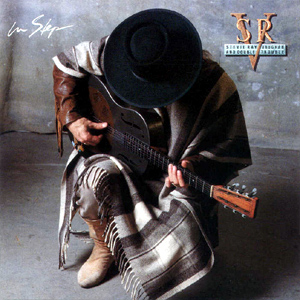
In Step is the fourth studio album by Stevie Ray Vaughan and Double Trouble released in 1989. The title In Step can be seen as referring to Vaughan's new-found sobriety, following the years of drug and alcohol use that eventually led Vaughan into rehabilitation. It was also Vaughan's final album with Double Trouble, and also Vaughan's last album to be released during his lifetime. In 1990, he recorded a collaboration album with his brother, Jimmie Vaughan, called Family Style; later that year, Stevie Ray Vaughan died in a helicopter crash.
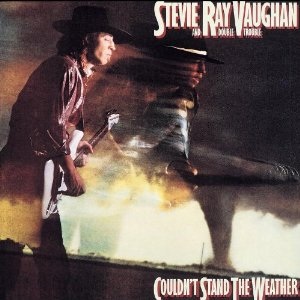
Couldn't Stand the Weather is the second studio album by American blues rock band Stevie Ray Vaughan and Double Trouble. It was released on May 15, 1984, by Epic Records as the follow-up to the band's critically and commercially successful 1983 album, Texas Flood. Recording sessions took place in January 1984 at the Power Station in New York City.

Soul to Soul is the third studio album by American blues rock band Stevie Ray Vaughan and Double Trouble released on September 30, 1985, by Epic Records. Recording sessions took place between March and May 1985 at the Dallas Sound Lab in Dallas, Texas. Vaughan wrote four of Soul to Soul's ten tracks; two songs were released as singles. The album went to #34 on the Billboard 200 chart and the music video for "Change It" received regular rotation on MTV. In 1999, a reissue of the album was released, which includes an audio interview segment and two studio outtakes.

Double Trouble is an American blues rock band from Austin, Texas, which served as the backing band for guitarist/singer Stevie Ray Vaughan. The group was active throughout the 1980s and contributed to reviving the blues, inspiring many later blues and rock musicians. Formed in Austin, Texas in 1978, the group went through several early line-up changes before settling on a power trio consisting of Vaughan, Chris Layton (drums), Tommy Shannon (bass). They became a four-piece by 1985 after adding Reese Wynans (keyboards). While with Vaughan the band was billed Stevie Ray Vaughan and Double Trouble. Rooted in blues and rock music, the group worked in many genres ranging from ballads to soul, often incorporating jazz and other elements.
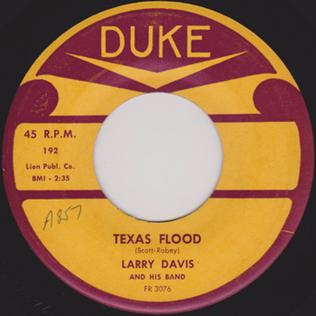
"Texas Flood" is a blues song recorded by Larry Davis in 1958. Considered a blues standard, it has been recorded by several artists, including Stevie Ray Vaughan, who made it part of his repertoire.
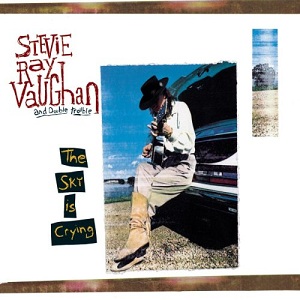
The Sky Is Crying is the fifth and final studio album by Stevie Ray Vaughan and Double Trouble, compiling songs recorded throughout most of their career. Released 14 months after Vaughan's death in 1990, the album features ten previously unreleased tracks recorded between 1984 and 1989. Only one title, "Empty Arms", appeared on any of the group's previous albums. The tracks were compiled by Vaughan's brother, Jimmie Vaughan, and was Vaughan's highest charting album at number 10.

Live Alive is the first live album compiled from four live performances by Stevie Ray Vaughan and Double Trouble. The performances were recorded on July 15, 1985 at the Montreux Jazz Festival; July 17–18, 1986 at the Austin Opera House; and July 19, 1986 at Dallas Starfest. Much of the album was overdubbed in the studio.

Lou Ann Barton is an American blues singer based in Austin, Texas since the 1970s. AllMusic noted that "The grace, poise, and confidence she projects on-stage is part of a long tradition for women blues singers".
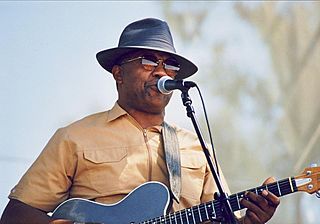
W. C. Clark is an American blues musician. He is known as the "Godfather of Austin Blues" for his influence on the Austin, Texas blues scene since the late 1960s.

The Texas Flood World Tour was a concert tour in North America and Western Europe, undertaken by American blues rock band Stevie Ray Vaughan and Double Trouble in 1983 and 1984. The band had released their debut album, Texas Flood, a week before the tour began.
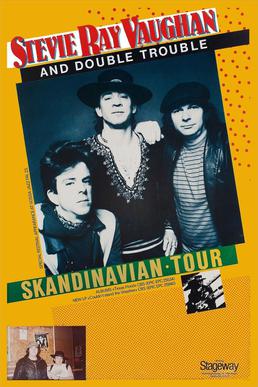
The Couldn't Stand the Weather Tour was a worldwide concert tour by blues rock band Stevie Ray Vaughan and Double Trouble. Produced in support of their 1984 album Couldn't Stand the Weather, the tour visited North America, Europe, Australasia and Japan from 1984 to 1985. To reflect the new musical direction that the group took with Couldn't Stand the Weather, the tour was aimed to differ from their past and surpass expectations of the band. In comparison to Vaughan and Double Trouble's modest stage setup from the previous Texas Flood Tour, the Couldn't Stand the Weather Tour involved a slightly more elaborate production. It utilized grander amplifier setups and sound systems to take advantage of the larger venues in which they performed. To avoid their renowned strictly blues material, Vaughan and Double Trouble embodied a more expanded and varied repertoire during performances. In disparity to the previous tour, each of the Couldn't Stand the Weather shows opened with mostly the same three songs before other material was played. The album and the tour were the beginnings of the group's mid-eighties musical development.
The Soul to Soul Tour was a concert tour through North America, Europe and Australasia, undertaken by American blues rock band Stevie Ray Vaughan and Double Trouble from 1985 through 1986. At the beginning of the tour, the band had finished recording their album Soul to Soul. Their commercial and critical acclaim had been demonstrated during the Couldn't Stand the Weather Tour in 1984, when they had played before a sold-out audience at Carnegie Hall. Longing for opportunities to expand the group's lineup, Vaughan and Double Trouble hired keyboardist Reese Wynans during the Soul to Soul recording sessions in Dallas, Texas. Throughout the tour, the band's success was confirmed as their performances consistently amazed and gratified their audiences.

The Live Alive Tour was a concert tour through North America and Europe, undertaken by Stevie Ray Vaughan and Double Trouble from 1986 to 1988. At the start of the tour, Vaughan and bassist Tommy Shannon had both achieved sobriety. Their success with overcoming long-term drug and alcohol addiction had been attained by entering a rehabilitation facility, where they stayed for four weeks. Although Vaughan was nervous about performing while sober, he received encouragement from his bandmates. Throughout the tour during performances, Vaughan would warn his audiences about the dangers of substance abuse.

The In Step Tour was a concert tour through the United States and Canada, undertaken by American blues rock band Stevie Ray Vaughan and Double Trouble from 1989 to 1990. Launched in support of their fourth and final studio album In Step, this was the third tour to include keyboardist Reese Wynans, who joined the band in 1985. Stevie Ray Vaughan and Double Trouble achieved international fame when their debut album, Texas Flood, was released in June 1983. Throughout their subsequent concert tours, the group's success was confirmed as their performances consistently amazed and gratified their audiences. Similar to their previous tours, the In Step Tour was a minimalist production. The stage featured a simple light show that changed according to the mood of certain songs performed. Although Vaughan and Double Trouble never followed a set list, all ten songs from In Step were played at least once during the tour, and as many as seven of them were included in each of the band's performances.

Stevie Ray Vaughan was an American blues rock guitarist, singer, and songwriter, and the frontman for the band Double Trouble. During his career he released four studio albums, one live album, and several singles.

Dennis Edward Freeman was an American Texas and electric blues guitarist. Although he is primarily known as a guitar player, Freeman also played piano and electronic organ, both in concert and on various recordings. He worked with Stevie Ray Vaughan, Jimmie Vaughan, Bob Dylan, Angela Strehli, Lou Ann Barton, James Cotton, Taj Mahal, Barry Goldberg and Percy Sledge amongst others.

Live at Montreux 1982 & 1985 is the fourth live album of American blues musician Stevie Ray Vaughan and his band Double Trouble, recorded at the Montreux Jazz Festival on July 17, 1982 and July 15, 1985, and released November 20, 2001 on Epic Records. Neither are complete concerts.

















